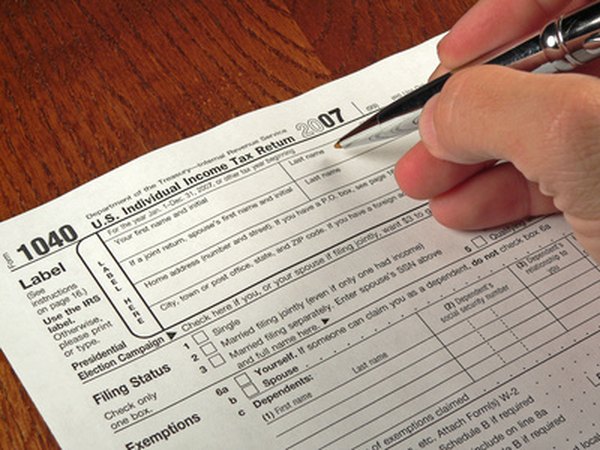Tax Information for Withdrawing From a Simple IRA
Use Form 1040 or Form 1040A to report your SIMPLE IRA withdrawals.
tax forms image by Chad McDermott from Fotolia.com
Employers with no more than 100 employees can offer their employees a avings incentive match plan, otherwise known as a simple IRA. These plans offer the same tax-deferred treatment as traditional IRAs, but they also allow your employer to contribute to the account on your behalf. Since contributions are excluded from your taxable income, you'll have to pay taxes on the distributions.
Qualified Withdrawals
SIMPLE IRAs follow the same rules for taking qualified distributions as traditional IRAs. Qualified distributions are distributions taken after you reach age 59 1/2. Qualified distributions count as ordinary income and are taxed at your marginal tax rate. For example, if you fall in the 33 percent tax bracket, you'll pay $6,600 if you take a $20,000 SIMPLE IRA distribution.
Early Withdrawals
If you take an early withdrawal, or one that does not qualify for an exception, you'll owe not only income taxes but also an early withdrawal tax penalty. The penalty is generally 10 percent of the distribution. However, you'll owe a 25 percent early withdrawal penalty rather than a 10 percent penalty if you take early withdrawal within two years of starting the SIMPLE IRA. The two years count from the day that you start participating in the SIMPLE IRA, either through your contribution or a contribution from your employer.
Early Withdrawal Exceptions
The same exceptions get you out of the early withdrawal penalty for a SIMPLE IRA withdrawal as a traditional IRA withdrawal. If you're permanently disabled, the entire distribution avoids the penalty. Other exemptions allow you to avoid the penalty on a certain amount of withdrawals, including for higher education expenses, medical expenses or insurance premiums while unemployed. For example, if you have $10,000 in higher education expenses and an early SIMPLE IRA withdrawal of $15,000, you avoid the penalty on all but $5,000 of the distribution.
Tax Reporting
Qualified SIMPLE IRA withdrawals must be reported on either Form 1040 or Form 1040A. On Form 1040, the distribution goes on line 15b and on Form 1040A, the distribution goes on line 11b. Non-qualified withdrawals require you to use Form 1040 because you'll also have to complete Form 5329 to either calculate the penalty or note your exception. However, the distribution itself is reported the same way - on line 15b.
References
Resources
Writer Bio
Based in the Kansas City area, Mike specializes in personal finance and business topics. He has been writing since 2009 and has been published by "Quicken," "TurboTax," and "The Motley Fool."

